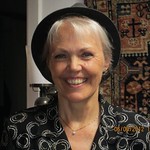I’ve had this call for papers for the ‘The Return of Biography: Reassessing Life Stories in Science Studies’ workshop at Science Museum on 18 July laying on my desktop for months:
The lived life serves as an organising principle across disciplines. We talk of the biographies of things and places, and we use personal narratives to give shape to history. Biography is central to historians’ work but often unacknowledged and untheorised: it is used to inspire and to set examples, and to order our thinking about the world, but is a primarily a literary mode; biographies written for popular audiences provide material for the most abstruse work across disciplines; and the canon of well-known lives dictates fashions in research.
For historians of science, technology and medicine this is a particularly pressing issue: their discipline is founded on the ‘great men’ account of discovery and advance, and, though that has long since been discarded, the role of the individual in historical narratives has not diminished, and heroic tales have themselves become a legitimate subject of inquiry. For writers and researchers in other fields, the question remains: how do the lives of individuals intersect with cultural trends and collective enterprise?
It has been laying there since November because there are so many different things in it I would like to take issue with:
– Isn’t the notion of ‘return’ of biography long overdue?
– Does the notion of ‘biographies’ of things and places make sense?
– Are biography and historiography necessarily narrative (story-telling) genres?
– Is it really true that the role of the individual in historical writing hasn’t diminished?
But given the restriction of a 20 minutes talk and my need to say something new, I eventually found out (but not until deadline day, last Friday) that I would rather like to engage with the explicit occasion for the workshop meeting — Science Museum’s Turing-exhibition — and ask whether biographical museum exhibitions are really possible?
I have to confess I haven’t seen Codebreaker yet — but will certainly do so, before the workshop (and if my abstract is accepted).
However, I have long been thinking about making a biographical exhibition here at Medical Museion. I would like to be able to combine the two major strands of my scholarly life so far, which are (1) writing (about) biography and (2) curating (and reflecting on) the use of material artefacts in science museum exhibitions on the other.
So far, however, I haven’t really seriously tried — and I think there are two reasons for this lack of action from my side.
One is more conceptual, having to do with the uncertain role of material things in the life-courses of scientists as opposed to the role of ideas, concepts, writing, etc. Symbols and text on paper and images have such a prominent place in the self-awareness of scientists. Just read their autobiographies; there are ideas, concepts, theories etc. on every page. But material artefacts play a much more humble role in the way scientists understand themselves in interviews and autobiographical reports.
The other reason is more practical: scientists like to save documents and images from their work for the archives and archives are by tradition often organised in person-defined document collections. But scientists rarely donate the material things they have worked with to museum collections. Material artefacts are mostly collected by museum with an eye to the historical importance of the things rather than as personal material archives.
All this makes it difficult to display the material life of an individual scientist. The ‘material turn’ in the humanities doesn’t easily translate into artefact-based museum exhibitions about lives in science.
(featured image: cover of T. Soderqvist, ed., The History and Poetics of Scientific Biography, Ashgate 2007)
 Ingen der var i kontakt med Anni, var i tvivl om hendes engagement og store omsorg for alles ve og vel og hendes store interesse for de faglige aktiviteter. Selvom Anni fik konstateret en alvorlig sygdom for knapt to år siden, mistede hun aldrig humøret. Hun insisterede på at arbejde gennem hele sygdomsforløbet, og hun passede sine opgaver til det allersidste.
Ingen der var i kontakt med Anni, var i tvivl om hendes engagement og store omsorg for alles ve og vel og hendes store interesse for de faglige aktiviteter. Selvom Anni fik konstateret en alvorlig sygdom for knapt to år siden, mistede hun aldrig humøret. Hun insisterede på at arbejde gennem hele sygdomsforløbet, og hun passede sine opgaver til det allersidste.